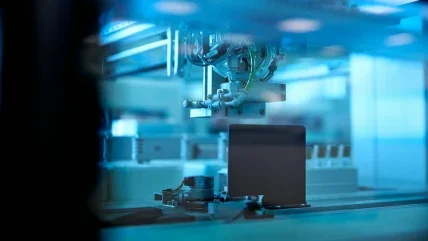
Using sound vibrations and pulses of near-infrared light, a Rutgers University scientist has developed a new ‘virtual biopsy’ device which can quickly determine a skin lesion’s depth and potential malignancy without using a scalpel.
This allows for biopsies to be less risky and distressing for patients. Currently, surgeons often don’t know the extent of a lesion and thus whether a referral to another specialist will be needed, until the surgery has already begun.
In the first-of-its-kind experimental procedure, called vibrational optical coherence tomography (VOCT), a 3-D map of the legion’s width and depth under the skin with a tiny laser diode is created. It uses soundwaves to test the lesion’s density and stiffness since cancer cells are stiffer than healthy cells. An inch-long speaker applies audible soundwaves against the skin to measure the skin’s vibrations and determine whether the lesion is malignant.
“This procedure can be completed in 15 minutes with no discomfort to the patient, who feels no sensation from the light or the nearly inaudible sound,” said lead researcher Frederick Silver, a professor of pathology and laboratory at Rutgers Robert Wood Johnson Medical School. “It’s a significant improvement over surgical biopsies, which are invasive, expensive and time consuming.”
The study found that a prototype VOCT device, which is currently awaiting FDA approval for large-scale testing, was able to accurately distinguish between healthy skin and different types of skin lesions and carcinomas. Researchers tested the device over six months on four skin excisions and on eight volunteers without skin lesions.
Further studies are required to improve the device’s ability to identify a lesion’s borders and areas of greatest density and stiffness, which would allow physicians to remove tumours with minimally invasive surgery.






